If you have time for only one exhibition this week, just rush to Musée Jacquemart André to see “Hammershøi, Master of Danish painting”, a complete discovery for many art lovers. Born in Copenhagen, in 1864, Vilhelm Hammershøi died young of a throat cancer in 1916. And disappeared from the art world until he was rediscovered (in France) in the 1990’s when le Petit Palais and Musée d’Orsay each had a retrospective of his work. He is considered by some art historians as the Vermeer of the 20 th century.
Enigmatic, mysterious, intimate, these paintings provoke fascination and curiosity. What kind of a man was this perfectionist of color, who always painted his wife from the back, in an abstract position? His first works were dedicated to his mother and his admiration for Whistler shows in the painting which he inspired, “Interior with the artist’s mother” in 1889. Later his wife Ida (the sister of his great friend the painter Peter Ilsted), will become his main model.
The exhibition of forty paintings includes some by his friends Carl Holsøe and Peter Listed, and their size fits perfectly with the small rooms of this formerly private house. For the first time eleven paintings were lent by Ambassador John Loeb who was posted in Denmark during President Reagan’s presidency. He was wise enough to collect Hammershøi and his contemporaries. It is thanks to his generosity that curator Jean-Loup Champion was able to produce this marvelous show.
There is an overwhelming simplicity and silence in these paintings. The artist was not expansive and since he painted at home, he made sure to empty the rooms where they lived, in order to give an abstract feeling to the interiors. His frugality reminded me of another great Danish artist, architect Jørn Utzon, whose interiors are often monacal. Hammershøi uses few colors and paints neutral backgrounds. There is no decorative effect.
His ladies are always dressed in black and white or occasionally in beige and his masterpiece “Five portraits” painted in 1902 appeared as shocking because nothing happens between the five friends sitting at the table. The only sign of life are two lit candles. The strangeness of his style could be quite depressing if it was not so strong! When you compare his interiors to his friends’ there is an emptiness and a lack of decor that give them their force.
His landscapes leave me more indifferent and I particularly disliked his nudes except for one “Three studies of feminine nudes” 1909-1910 which reminded me of Picasso.
Musée Jacquemart-André, until July 22.
Share this Post
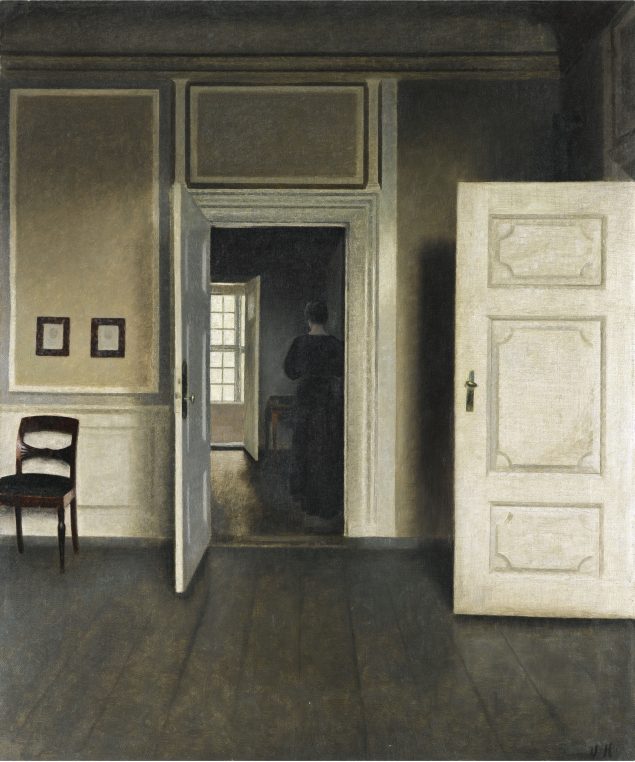
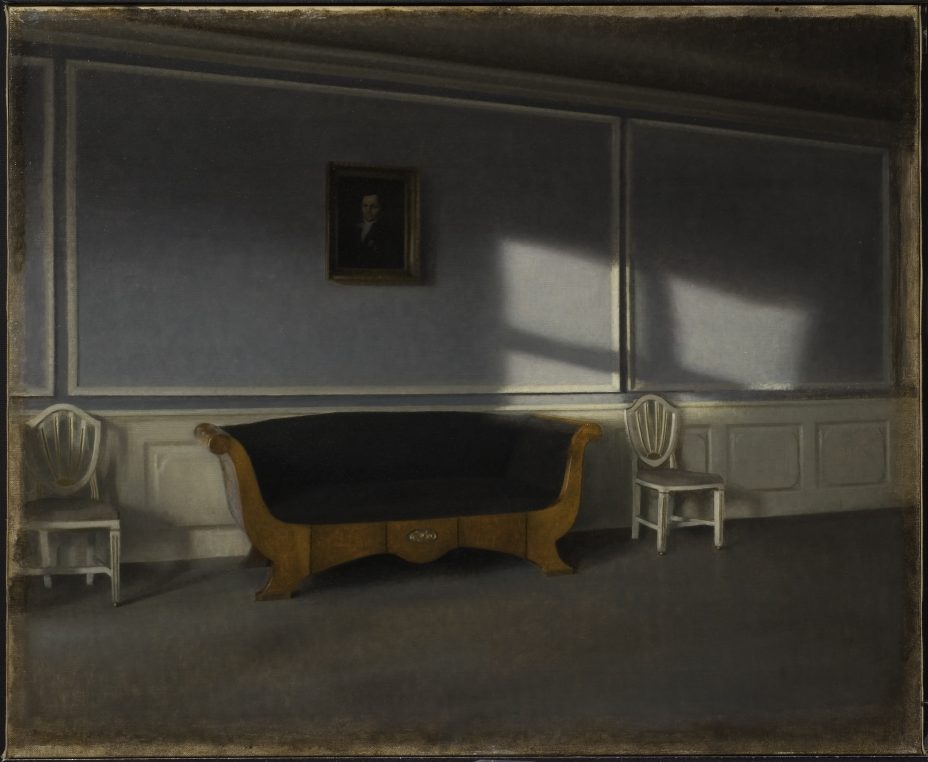
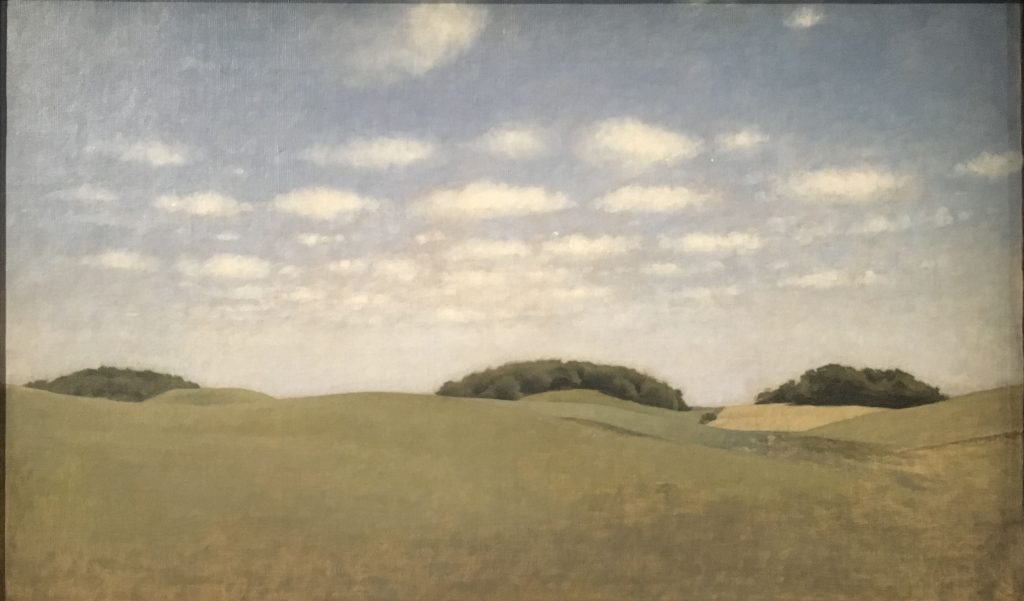


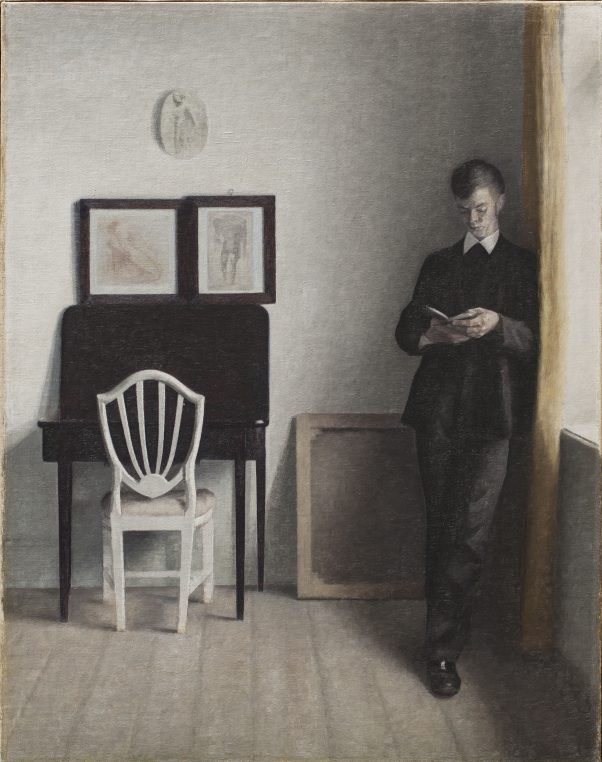
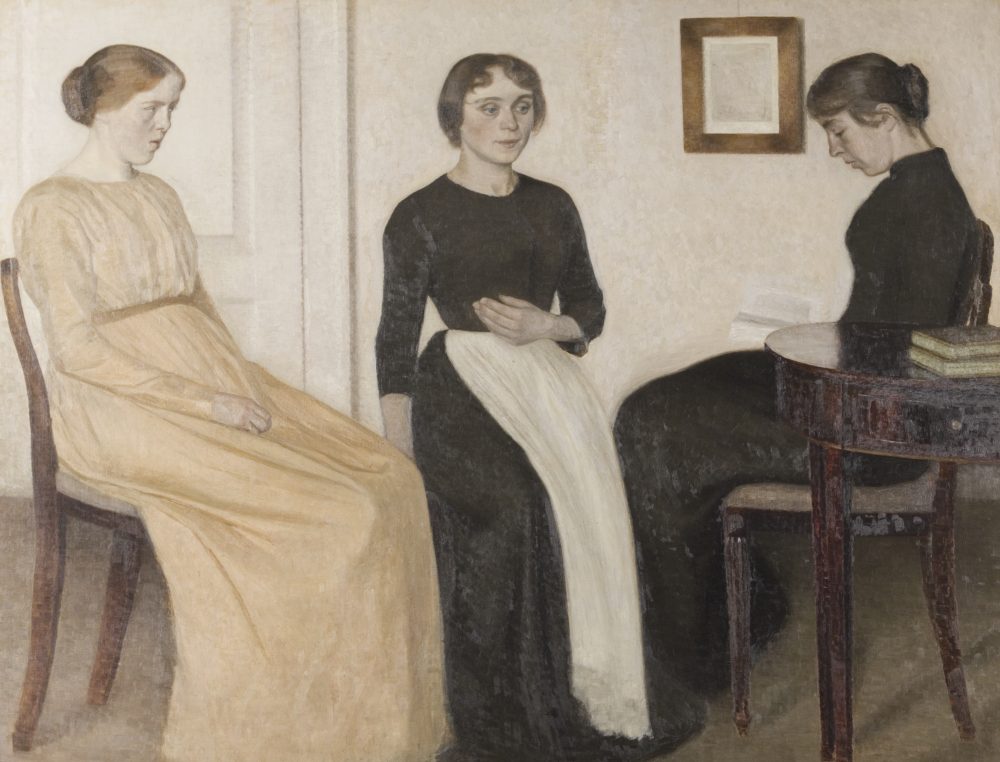
One Comment on “Hammershøi, a resurrection, at Musée Jacquemart André”
Laure, so nice to see that this magnificent Master of light and shadow has brought a ray of sunshine and a meditative balm to Paris. The first time I saw his work was in 2007 at an exhibit at the Centre de Cultura Contemporània de Barcelona. He was paired with film maker Theodor Dreyer. It was sublime. This is certainly worth a visit to Paris albeit all the hurly-burly. I am sure that the Dutch artist Desiree Dolron (XTeriors series) has been influenced by his light and mood. Thank you for the heads up!